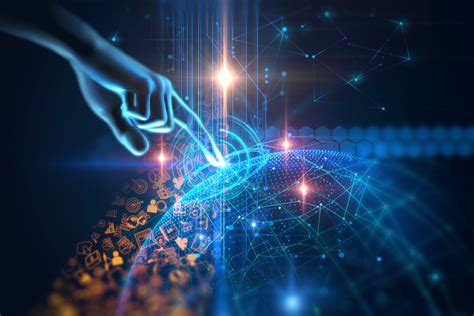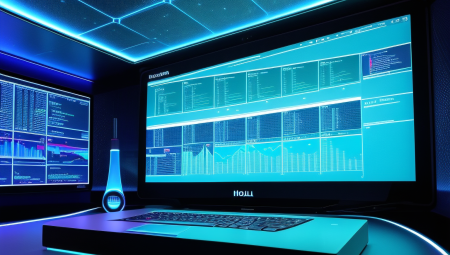Are you ready for the future of education? In today’s rapidly evolving world, the way we learn and teach is also changing at an unprecedented pace. From personalized learning experiences tailored to each student’s unique needs to immersive virtual reality in the classroom, cutting-edge educational technologies are revolutionizing the way knowledge is acquired and shared. In this blog post, we will explore the latest innovations in education, including the use of artificial intelligence, gamification, the internet of things, augmented reality, blockchain, adaptive learning platforms, data-driven education, and collaborative online learning. Join us as we dive into the exciting potential of these transformative technologies and their impact on the next generation of learners. Welcome to the future of education – where possibilities are limitless, and the boundaries of traditional learning are breaking down.
Table of Contents
Personalized Learning: Tailoring Education for Every Student
Personalized learning is a powerful approach that tailors education to meet the individual needs and interests of each student. By leveraging technology and data analytics, educators can create customized learning experiences that cater to students’ unique learning styles, abilities, and pace of learning.
This approach allows students to take ownership of their learning, empowering them to explore topics that they find interesting and to progress at a pace that is comfortable for them. It also helps to address the diverse needs of students, including those with learning disabilities or language barriers, by providing targeted support and resources.
With personalized learning, educators can use adaptive learning platforms and data-driven education to track students’ progress and adjust their learning paths accordingly. This ensures that each student receives the support and resources they need to succeed, ultimately leading to improved learning outcomes and student engagement.
Overall, personalized learning represents a shift away from the traditional, one-size-fits-all approach to education, towards a more inclusive and effective model that truly tailors education for every student.
Virtual Reality in the Classroom: Immersive Learning Experiences
Virtual reality (VR) has become an increasingly popular tool in the classroom, offering students immersive learning experiences that were once unimaginable. With VR, students have the opportunity to step into different worlds, explore historical events, and dive into scientific experiments, all from the comfort of their desks.
One of the key benefits of utilizing VR in education is the ability to cater to different learning styles. Visual and kinesthetic learners, in particular, can greatly benefit from the immersive nature of VR, as it allows them to engage with the material in a way that traditional methods may not.
Furthermore, VR can also make learning more enjoyable and engaging for students. By providing a hands-on and interactive approach to learning, VR can help spark curiosity and excitement, leading to a deeper understanding of the subject matter.
As technology continues to advance, the use of VR in the classroom is expected to become even more prevalent, offering students new and exciting ways to learn and explore the world around them.
Artificial Intelligence in Education: Enhancing Teaching and Assessment
Artificial Intelligence (AI) has been revolutionizing various industries, and education is no exception. With the integration of AI, teaching and assessment in the education sector have been greatly enhanced. One of the key benefits of AI in education is the ability to personalize learning experiences for students. AI can analyze each student’s learning style, strengths, and weaknesses, and provide tailored content and feedback to help them succeed.
Furthermore, AI has improved the assessment process by providing teachers with data-driven insights into students’ performance. AI algorithms can analyze large volumes of student data to identify patterns and trends, allowing educators to make more informed decisions about their teaching methods and strategies.
Another way AI is enhancing education is through the automation of administrative tasks, such as grading and lesson planning. This allows teachers to focus more on direct student interaction and personalized instruction, ultimately leading to a more efficient and effective learning environment.
In conclusion, the integration of AI in education is transforming the way teaching and assessment are conducted. By personalizing learning experiences, providing valuable insights, and automating administrative tasks, AI is enhancing the quality of education and preparing students for success in the ever-changing digital world.
Gamification: Making Learning Fun and Engaging
Gamification is a powerful tool that is revolutionizing the way we approach education. By incorporating game design elements and principles into learning environments, educators have the ability to make the educational experience more immersive, engaging, and enjoyable for students of all ages.
When learning becomes fun and interactive, students are more likely to stay motivated and retain the information being presented to them. This approach not only enhances student engagement, but also fosters a love of learning that can last a lifetime.
Through gamification, educational content can be presented in a way that addresses each student’s individual learning style and pace. This personalized approach allows for a more effective and efficient learning experience, as students are able to progress at their own speed and focus on areas where they need the most improvement.
Furthermore, by incorporating rewards and challenges into the learning process, gamification provides students with a sense of accomplishment and encourages them to strive for continuous improvement. The element of competition can also be used to motivate students to achieve their best, while fostering a sense of collaboration and teamwork among their peers.
Internet of Things in Education: Smart Classrooms for Enhanced Learning
Smart classrooms are revolutionizing the way students learn by integrating Internet of Things (IoT) technology into the educational environment. With IoT, everyday objects are connected and able to collect and exchange data, creating a network of physical devices that communicate with each other. In the context of education, this means that classrooms can be equipped with smart boards, sensors, and other connected devices that enhance the learning experience for students.
One of the key benefits of IoT in education is the ability to create smart classrooms that can adapt to the specific needs of students. For example, IoT-enabled devices can monitor student engagement and performance in real time, allowing teachers to make data-driven decisions about their teaching methods and the content being delivered. This level of personalization and adaptability is essential for ensuring that every student receives the support and resources they need to succeed.
Furthermore, IoT technology in education can also facilitate smart campus management, allowing schools to monitor and optimize energy usage, security, and other facilities management processes. By leveraging IoT, educational institutions can create a more sustainable, secure, and efficient environment that supports enhanced learning outcomes.
Overall, the integration of Internet of Things technology in education is paving the way for smart classrooms that offer enhanced learning experiences. By leveraging connected devices and data-driven insights, schools can create an environment that is tailored to the needs of students and optimized for improved educational outcomes.
Augmented Reality: Bridging the Gap Between Physical and Digital Learning
Augmented Reality (AR) is a technology that superimposes a computer-generated image on a user’s view of the real world, thus providing a composite view. In the field of education, AR has been making significant strides in bridging the gap between physical and digital learning.
One of the key benefits of AR in education is its ability to provide interactive and engaging learning experiences for students. By using AR applications, students can visualize complex concepts in 3D, allowing them to explore and interact with virtual objects in a real-world environment.
Furthermore, AR can also enhance collaboration and communication among students. With AR-enabled devices, students can work on group projects and solve problems together in a more immersive and interactive manner, breaking down the barriers of traditional classroom settings.
Another advantage of AR in education is its potential to personalize learning experiences. AR applications can adapt to individual students’ learning styles and pace, providing tailored content and feedback based on their specific needs and abilities.
Blockchain in Education: Secure and Verifiable Credentials
Blockchain technology has been making waves in various industries, and its potential applications in education are immense. One of the most promising uses of blockchain in education is the creation of secure and verifiable credentials for students.
Traditionally, educational credentials such as diplomas and transcripts are stored in physical or digital formats that can be easily tampered with. However, by using blockchain technology, these credentials can be securely stored in a decentralized and immutable ledger, ensuring that they cannot be altered or falsified. This provides an added layer of security and trust in the authenticity of a student’s educational achievements.
Furthermore, blockchain technology allows for easy verification of credentials, making the process more efficient for employers, educational institutions, and other relevant parties. With blockchain-based credentials, there is no need for time-consuming and costly verification processes, as the authenticity of the credentials can be quickly and easily confirmed.
In addition to enhancing security and verification processes, blockchain technology also has the potential to streamline the transfer and sharing of credentials between educational institutions, employers, and students. This can lead to a more seamless and transparent process for all parties involved, ultimately benefiting the education system as a whole.
Adaptive Learning Platforms: Adapting to Each Student’s Needs
Adaptive learning platforms are revolutionizing the way education is delivered, by tailoring the learning experience to each student’s individual needs. These platforms utilize advanced algorithms to analyze each student’s strengths and weaknesses, and then provide personalized learning paths to help them succeed.
This customized approach allows students to learn at their own pace, ensuring that they fully understand each concept before moving on to the next. It also provides support for students who may be struggling in certain areas, giving them the tools they need to improve and succeed.
By adapting to each student’s needs, adaptive learning platforms are able to maximize the potential of every individual, regardless of their learning style or ability level. This personalized approach not only enhances the learning experience, but also helps students build confidence and achieve greater academic success.
With the advancements in technology and the rise of personalized learning, adaptive learning platforms are poised to transform education and empower students in new and exciting ways.
Data-Driven Education: Utilizing Big Data for Improved Learning Outcomes
In today’s digital age, the use of big data has revolutionized various industries, including education. With the help of advanced technology, educators are now able to collect and analyze large amounts of data to gain valuable insights into student learning behaviors and preferences.
By harnessing the power of big data analytics, schools and learning institutions can tailor their teaching methods and curriculum to meet the individual needs of each student. This personalized approach to education allows for improved learning outcomes and student success.
Additionally, big data can also be used to identify areas of improvement within the education system, leading to more effective policies and strategies for enhancing overall learning experiences. By analyzing trends and patterns in student performance, educators can make data-driven decisions to optimize teaching methods and resources.
Overall, the utilization of big data in education has the potential to transform the way we approach teaching and learning, ultimately leading to better outcomes for students and institutions alike.
Collaborative Online Learning: Breaking Down Geographical Boundaries
In today’s digital age, education is no longer confined to the traditional classroom setting. With the advancement of technology, Collaborative Online Learning has emerged as a powerful tool for breaking down geographical boundaries and connecting students and educators from around the world. Through online platforms and tools, students can participate in interactive learning experiences and gain access to diverse perspectives and resources.
One of the key benefits of Collaborative Online Learning is the ability to break free from the limitations of physical distance. Students no longer need to be in the same location to engage in meaningful discussions or collaborative projects. This opens up a world of opportunities for students to connect with peers and experts from different cultures and backgrounds, broadening their understanding of the world and enhancing their critical thinking skills.
Furthermore, Collaborative Online Learning allows for the seamless exchange of ideas and knowledge, enabling students to collaborate on research projects, participate in virtual group discussions, and work together on assignments in real-time. This not only enhances the learning experience but also fosters teamwork and communication skills that are essential for success in the modern workplace.
As technology continues to advance, Collaborative Online Learning is poised to play an even greater role in breaking down geographical boundaries and creating a more connected and inclusive learning environment for students worldwide.





